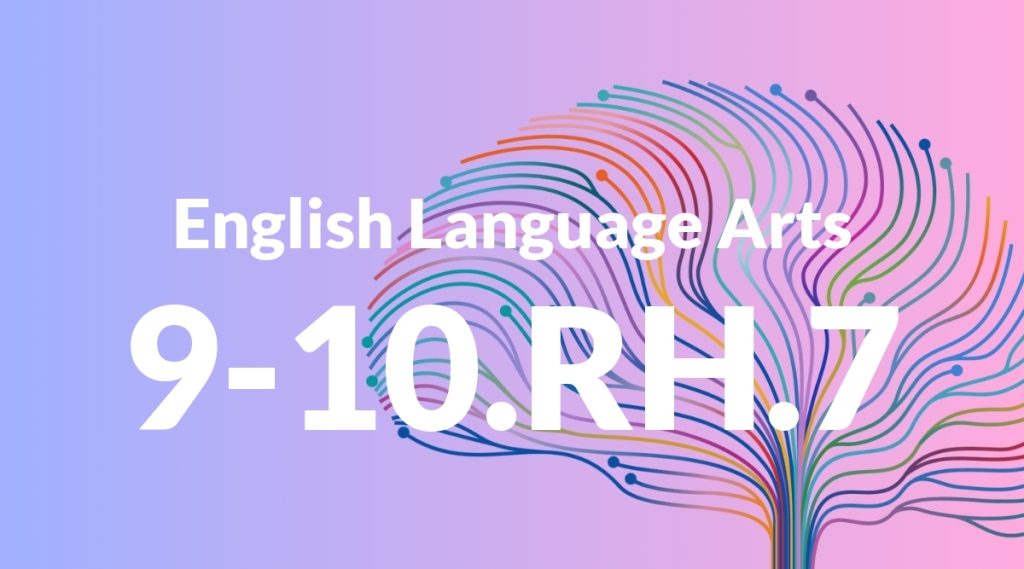Standard: 9-10.RH.7 – Integrate quantitative or technical analysis (e.g., charts, research data) with qualitative analysis in print or digital text.
Grade level: Grade 9-10
Subject: English Language Arts
Domain: History/Social Studies
Teacher Overview
This standard emphasizes the integration of quantitative or technical analysis with qualitative analysis in both print and digital texts. It is crucial because it helps students develop a holistic understanding of complex information, which is essential for critical thinking and effective communication. Before tackling this standard, students should be comfortable with basic quantitative data interpretation, such as reading charts and graphs, and qualitative analysis, such as summarizing and interpreting written texts.
Mastering this standard will enable students to critically evaluate complex texts that combine quantitative and qualitative data. They will be able to synthesize diverse sources of information and present integrated analyses in their writing.
Common Misconception 1
One common misconception is that quantitative and qualitative analyses are entirely separate and cannot be integrated. This is incorrect because both types of data can complement each other, providing a more comprehensive understanding of the topic.
Intervention 1
Teachers can use examples and practice activities that illustrate how quantitative data can enhance qualitative narratives. For example, pairing statistical data with historical accounts to provide a richer context.
Common Misconception 2
Another misconception is that quantitative data is always more reliable than qualitative data. This is not true as both types of data have their strengths and limitations. Qualitative data can provide context and insights that numbers alone cannot.
Intervention 2
Discuss case studies where qualitative data offers critical insights that quantitative data alone cannot. Highlight the importance of context and narrative in understanding data.
Prerequisite Knowledge
Students should have a basic understanding of how to read and interpret charts, graphs, and other forms of quantitative data. They should also be familiar with qualitative analysis, such as summarizing and interpreting written texts.
Subsequent Knowledge
After mastering this standard, students will be able to critically evaluate complex texts that combine both quantitative and qualitative data. They will develop skills in synthesizing diverse sources of information and presenting integrated analyses in their writing.
Instructional Activities
- Analyzing historical events using both statistical data and narrative accounts
- Creating presentations that combine charts and qualitative descriptions
- Writing essays that integrate research data with qualitative analysis
- Using digital tools to merge quantitative and qualitative information in reports
- Conducting research projects that require both data analysis and narrative synthesis




